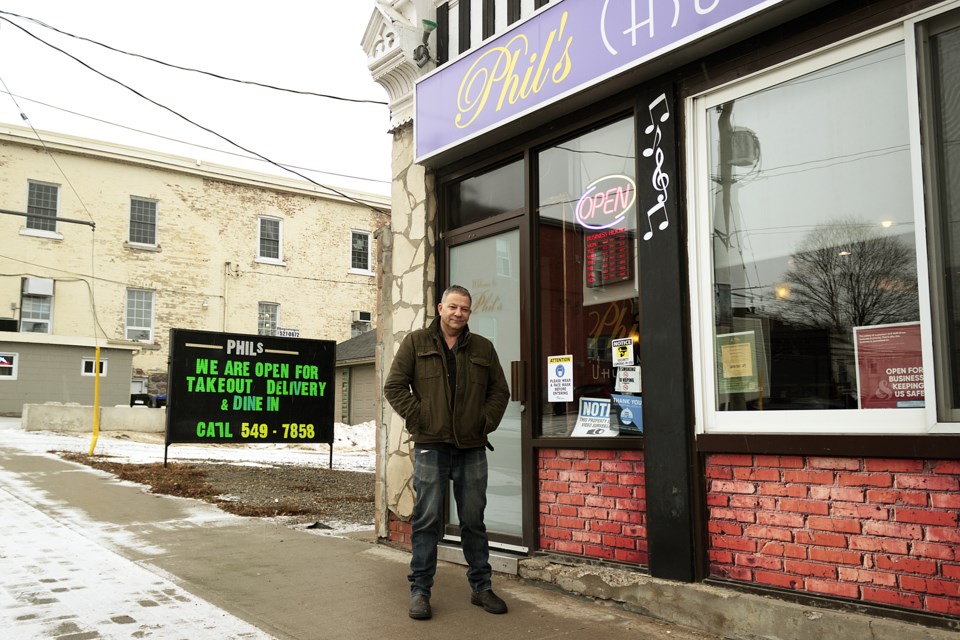Try as they might, restaurants are figuratively running out of spoons.
Phil Karpathios is the owner of two area restaurants: Phil’s Casual Dining in Penetanguishene and Phil’s Pub & Eatery in Midland. Two weeks ago at the heart of the holiday rush, his outlook on the December capacity restrictions by the province was grim although he remained optimistic.
Since January 5, the province has initiated a modified version of Step 2 for the Roadmap to Reopen, which involves halting indoor dining in restaurants until at least January 26.
So what’s changed?
“You can start with ‘W-T-F’,” said Karpathios. “Today we had one take-out – a toast and a coffee – where we would’ve (otherwise) had a 100-plus breakfasts.
“My staff are upset because we had to trim the wages. I didn’t close; I shortened my hours a bit, but I also shortened the amount of staff working because it won’t be the same kind of business.
“It’s going to be a long 21 days,” Karpathios added.
The Ontario Business Costs Rebate Program was also expanded to help provide a rebate payment equivalent to 50 per cent of costs for eligible businesses with reduced capacity to 50 per cent, and a rebate payment equivalent to 100 per cent of costs for 100 per cent closed indoor activities such as eligible gyms and restaurants.
“It doesn’t matter,” Karpathios mulled. “The government’s working on the rebate to pay your utilities. But big [expletive] deal.
“A $1,500 hydro bill is the least of my expenses here. My two restaurants, I operate over $1.5 million in operating expenses. It’s kind of hard to break down that per-person how much you need a day to break even.
“The gyms, I feel for them worse because they were closed a lot longer. We can still do takeout and delivery, but am I going to sit here by myself and do it? I don’t want to do it. Honestly, I’m burnt out; I’m mentally and physically burnt out,” he admitted with a sigh.
Karpathios could be considered a successful businessman to have two restaurants under his belt, but remarked that much of his savings and retirement goals have been whittled away as the pandemic continues.
Smaller restaurants might not have the benefit of experience, and he had words of advice for other businesses doing their best to make it through to better days.
“In order to survive this, you have to maintain a full menu, you have to offer takeout, you have to maintain your hours, you have to shorten your staffing a little bit in your hours, but you have to be open in those hours to do the work,” Karpathios stated.
“Whether you make $300 today and $500 tomorrow or whatever, it adds up. It might not be enough, but if you get up and go to work every day, it’s better than saying ‘I’m shutting down four days a week and I’ll work on the weekends’. Some businesses put up two specials on Tuesday, Thursday and Friday; the same stuff. Well, you’re not going to order every Tuesday, Thursday or Friday the same stuff.
“You have to be versatile, you have to keep your prices low. You have to offer incentives for people to come in… and support.”
When restaurants do allow indoor dining, patrons will require the enhanced vaccine passport with QR code in either digital or physical form to show staff upon entry. The new proof of vaccination requirement came into effect on January 4, one day before modified Step 2 was mandated.



